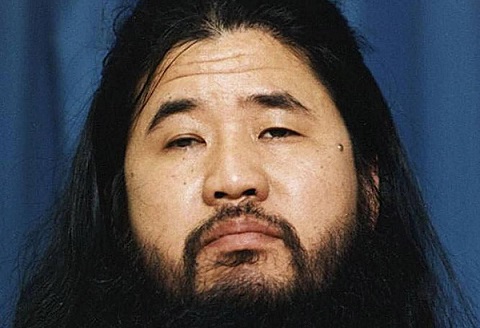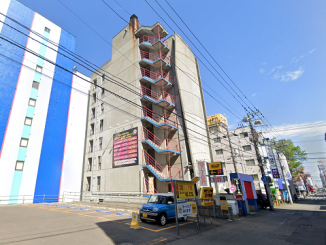
Seven members of the Aum Shinrikyo doomsday cult which carried out a deadly chemical attack on the Tokyo underground in 1995 have been executed, including cult leader Shoko Asahara.
The Sarin attack, Japan’s worst terror incident, killed 13 people and injured thousands more.
The executions took place at a Tokyo detention house on Friday morning.
Japan does not give prior notice of executions, but they were later confirmed by the justice ministry.
Shoko Asahara, 63, and his followers were also accused of several other murders and an earlier Sarin gas attack in 1994 which killed eight and left 600 injured.
Their execution, by hanging, had been postponed until all those convicted had completed their final appeals. That happened in January.
Another six members of the cult are still on death row.
Injured victims and the families of those killed have welcomed the executions.
“I reacted calmly… But I did feel the world had become slightly brighter,” said Atsushi Sakahara, a film director who was caught in the attack.
“It will be impossible to ever forget the incident, but the execution brings a kind of closure.”
What was the Tokyo attack?
On 20 March 1995, cult members released the Sarin on the subway in the Japanese capital. They left punctured bags filled with liquid nerve agent on train lines going through Tokyo’s political district.
Witnesses described noticing the leaking packages and soon afterwards feeling stinging fumes hitting their eyes.
The toxin struck victims down in a matter of seconds, leaving them choking and vomiting, some blinded and paralysed. Thirteen people died.
Aum Shinrikyo, often shortened to Aum, believed that the end of the world was coming and that those outside the cult would go to hell – unless they were killed by cult members.
Cult leader Asahara styled the attack as a “holy attempt to elevate the doomed souls of this world to a higher spiritual stage”, the Japan Times reports.
In the months after, members of the cult made several failed attempts to release hydrogen cyanide in various stations.
The attack shocked Japan, a country that prided itself on low crime rates and social cohesion.
Scores of Aum members have faced trial over the incident and 13 were sentenced to death, including Asahara.
Another six are serving life sentences.
What is the Aum Shinrikyo cult?
The cult, whose name means “supreme truth”, began in the 1980s as a spiritual group mixing Hindu and Buddhist beliefs, later working in elements of apocalyptic Christian prophesies.
Shoko Asahara, also known as Chizuo Matsumoto, declared himself to be both Christ and the first “enlightened one” since Buddha.
Aum Shinrikyo gained official status as a religious organisation in Japan in 1989 and picked up a sizeable global following. At its peak, Asahara had tens of thousands of followers worldwide.
The group gradually became a paranoid doomsday cult, convinced the world was about to end in a global war and that only they would survive.
The cult went underground after the 1995 attack, but did not disappear, eventually renaming itself Aleph or Hikari no Wa.
Aum Shinrikyo is designated a terrorist organisation in the US and many other countries, but Aleph and Hikari no Wa are both legal in Japan, although designated as “dangerous religions” subject to surveillance.
It still has followers both in Japan and also worldwide, in particular in some countries of the former Soviet Union.
In 2016, police in Russia conducted a number of raids on suspected cult members in Moscow and St Petersburg.
How has the execution gone down in Japan?
Shizue Takahashi, the widow of a subway worker killed in the attack, said she felt Asahara’s execution was fitting.
“He of course deserves death,” she told reporters. “The execution was processed as it should be… so no tears for me at all.”
Japan has executed as many as eight people a year since an effective moratorium ended in 2010.
The death penalty is only used for serious cases of murder. Officials do not give advance public notice of executions, and those condemned usually learn they are scheduled to die just a few hours beforehand.
Source: bbc.co.uk






Be the first to comment